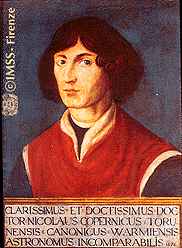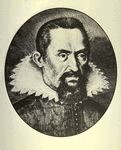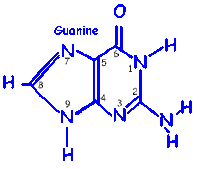Preface.Life in Two worldsThese are a few snapshots of my journey to the present time.
I was born into a Methodist family. Right from the beginning I was part of the Methodist Church, all my relations were Methodists as were my parent's friends. There was no life outside the Church. My maternal Grandfather was a local preacher who held services in his house, was Superintendent of the Sunday School My mother and her sisters of course were also in the Church and taught Sunday School. My father was a Local Preacher, Circuit Steward and at times a Sunday School Superintendent, and after retiring from the Bank became a full time minister for more than twenty years.So I was a genetic Christian.
I moved up through the classes in Sunday school and learned scripture verses by heart. Sundays were to be kept sacred.
I went to a Methodist boarding school, steeped in Methodist tradition, where the Headmaster and several teachers were from English Methodist Schools. I was confirmed into the Church by the Rev. Dr William Meara the President of the Methodist Conference in my Matriculation year.
After school I joined up with the Methodist Church and became a member of the Guild and the Church badminton club and sang in the choir.
There were certain hallmarks of a good Methodists. It was really leading a life of temperance. Such as not playing sport on Sunday, or drinking alcoholic drinks, which divided us from the secular world, the other world. Not playing sport on Sunday had a very important result as it affected my cycling career and my ambition to go to the Olympics.
I became a leader in the Church and was made a Society Steward at a very young age.
There was of course the Spiritual side which put God at the centre of our lives. We knew something that those outside the Church did not and we were apart from them.
Pretoria Fellowship
In 1953 I was working for the Reserve Bank in Pretoria. Newly arrived I soon found friends in the Church and the Methodist guild. One evening it was my turn to lead the fellowship and I took as my text.
You shall be saved by works alone. I think this was a sort of turning point in my life,though I must have been working towards it for some time. No more being saved by faith. There was much that I didn't understand in the bible. It didn't make sense to me. I realise now why I didn't understand it. It was because it didn't actually make sense at all.Nothing to do with my cognitive ability at all.
Talk in Potchefstroom.
In 1954 I left the Bank after seven years to study Science at University
After graduating I joined the Department of Bantu Agriculture and was sent to Potchefstroom and then after nine months was sent to Witsieshoek a Basuto Homeland, as an Agricultural Officer. I married soon after. There were political problems for my wife who became a teacher in a Basuto Training College. It was at the time of the Sharpville uprising, so I decided to move to Pietermaritzburg to continue my studies and do a masters degree in Grassland Science and it was here that I began my gradual move away from the church into the next phase of life outside the Church.
The last time I stood up in front of a group of people to give a religious talk was in 1958. It was the occasion of a get together of all the Methodist guilds in the Potchestroom district. I was giving a talk about the work the
Methodist Youth of Natal were doing in Zululand. Every July and Christmas holiday a group of about twenty would travel up to Zululand to build churches, hospitals , schools and ministers manses. I was involved in this work for four years while I was at University. It was very important for us, though I do not know if the work was important for the recipients.
My Life outside the Church.I had studied Genetics, Zoology, Botany Chemistry and Physics and then Grassland Ecology. and was beginning to discover that '
Nothing in biology makes sense except in the light of evolution' but it was played down. Just remember this was fifty years ago.
There was no way back for me to work for the Government after what had transpired in Witsieshoek so in 1963 we started farming and I was too busy to really study any science seriously unless it had a bearing on my farming, but I was still drifting away from the Church. I know I became irritated with my wife going to Bible studies during the week. In the 1970's I bought a book on 'Genetics and Man' which influenced me greatly.I still have it,very much used. It was considered one of great significance at the time.
This was a gradual move by neglect rather than intent, so the move was painless as the transition was over a great number of years with the final move only in about 1992, some thirty years it had taken. I was able to say 'thus far and no further', though I still remained as it were, in the closet. The move really came after I had joined a fellowship with my wife in Plettenburg Bay. There had been people that had fallen down having been slain by the Holy Spirit and others speaking in tongues. At another meeting I was taken aback when the man sitting next to me had been asked if he was saved, 'yes' he lied. I knew George better. I was perturbed that I would be asked. I was told by Colin, one of the fellowship members that he had nothing to say to anyone not a Christian. I finally made a stand when his wife, the leader of the fellowship, asked me if I was coming to the next meeting and I said 'Its not my scene'.
At this time I was starting to write a lot of notes about the ecology of the Southern Cape and evolution, which I became more enthusiastic about when I arrived in New Zealand twelve years ago, but still in the spiritual wilderness which didn't seem to worry me over much.
So with little to do I got back to reading about the rapid progress being made in DNA and evolution research which gave me the basis for my thinking and a better foundation. Not that it has helped my understand our existence any better, but certainly a lot more satisfactory than saying 'God did it'.
This is how I see it all now . .The biggest advance in biology and perhaps all science since Darwin has been the discovery of the structure of the DNA molecule in 1953 when Frances Crick famously said to a friend in a pub
I think we have discovered the secret of life. I also realised that our consciousness has evolved and was not a gift from God.
The bible taught us what sin was. That we were born in sin. Yet so much of the 'sin' in us is genetic together with the environmental influence. 'The sins of the father will carry on for seven generations'. The observation was right but the theory was wrong. 'God' made imperfect man and we have to clear up the mess. This is really strange. A God of love burdening us with all these illnesses because of our sin and then giving us the power to fix up the mess. With genetic engineering or medication we can sort out these 'sins'.
My family here had been told in no uncertain terms that I was not wanting to be pressured in any way over attending church. I was beginning to find my way and had to make a statement. Reading Lloyd Geerings book
Tomorrow's God and Anthony Freemans book
God in us helped me. Of all people I chose to tell was our estate agent. We had become fairly friendly with her over a period of more than a year. One day, somehow, I sort of blurted out to her that I didn't believe in God or something like that, and she said 'good on you'. It was like standing up and saying 'I am an Alcoholic' It wasn't over though because there seemed to be more battles with myself but eventually I got through, even though I still carry a lot of baggage from the past.It was like a great weight off my head. Going to an organisation called to 'Sea of Faith' helped a great deal knowing that there were others that have perhaps fought similar battles.
There was a paradigm shift. Everything in the world was now seen in a different light. In fact life in the church and out of the church are two different worlds. Somehow I think looking back at the time I was young and in the church, I was just acting and not very sure that I was on the right track but now I'm sure a lot more confident. It is very hard to make a stand when the whole family is different The pressure to believe what one's family believes is strong, and it is tough indeed to move beyond it. It has surprised me that old friends that I hadn't seen for some time
had not moved along with me. Very intelligent people. I look back not with nostalgia at much of my life in the church but sometimes with some embarrassment
If I am wrong in all this, I -will -be- wrong -for -the -right -reasons.
The next chapters are the beginning of what I want to say about the situation as I see it.It will be expanded as time goes by.I am not an expert,this is just a journey.It has taken me all this effort to get to this point,how can you expect an accountant to get here without studying science.
As Richard Dawkins writes; 'It has become almost a cliché to remark that nobody boasts of ignorance of literature, but it is socially acceptable to boast ignorance of science and proudly claim incompetence in mathematics.





















